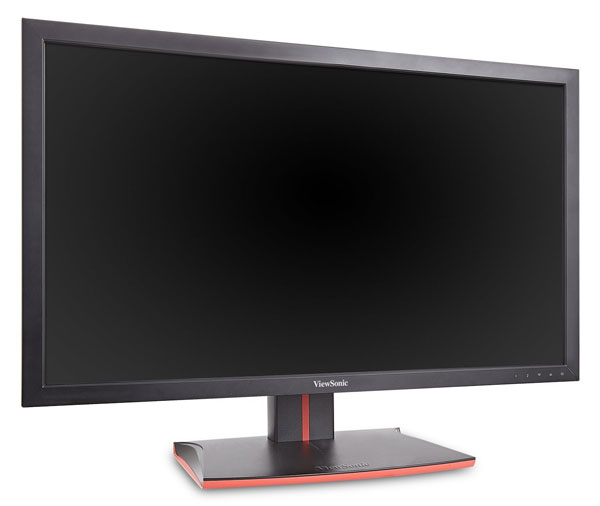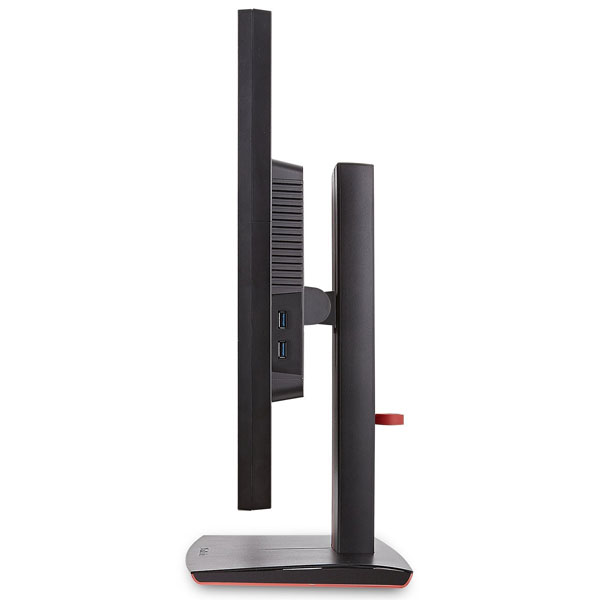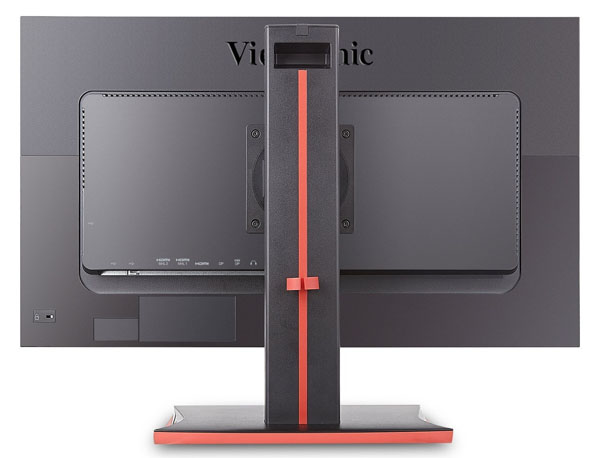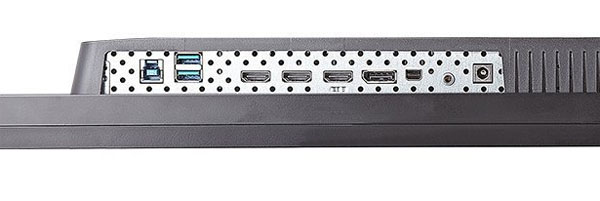ViewSonic XG2700-4K 27-inch Ultra HD FreeSync Monitor Review
If you're looking for FreeSync, IPS and Ultra HD in one product, choices are slim. ViewSonic has entered this rarified category with a phenomenal effort in the XG2700-4K. This 27-inch monitor is one of the best displays we've ever tested.
Why you can trust Tom's Hardware
Packaging, Physical Layout And Accessories
The XG2700-4K comes well-packed in a double-corrugate carton filled with rigid molded Styrofoam. The panel and upright are already assembled. Once you remove it from the box, simply bolt on the base and you're ready to connect.
The wire bundle includes USB 3.0 plus a heavy-duty DisplayPort (standard-to-mini) cable. The power supply is external and comes in the form of a small brick. Additional items include a CD with drivers and a user manual, and a calibration report. Yes, this is the first gaming monitor we've ever seen that comes calibrated at the factory. And as you'll see later, ViewSonic is really serious about accuracy.
Product 360
The front layer is a standard 3H-hardness plastic that absorbs all but the harshest light while retaining excellent image clarity. There is no grain visible and every image detail pops out sharply. Bezel keys are touch-sensitive and live in the lower right corner. They take almost no pressure to operate so tread lightly when making changes to the OSD. Navigation is fairly intuitive but we're a little spoiled by the joysticks provided on other monitors.
The stand and base provide a full range of adjustments to include 4.7in (120mm) height, 175 degrees swivel, 25 degrees tilt and a portrait mode. Movements are firm and solid with no extra play. The parts are covered in hard plastic with metal cores. Styling is understated with a simple squared-off panel and a few red accents. The base and panel turn together so ViewSonic has added felt pads underneath to protect your furniture.
Aside from rounded corners, there are no tapers or compound curves here. The chassis wraps tightly over the shielded internals with ventilation provided all around the power bulge. On the right side are two USB 3.0 ports. Two more adorn the bottom input panel. Sticking out the back of the upright is a small cable clip.
From the back you can see ViewSonic's logo displayed prominently across the top. Inputs are marked with small white lettering. At the lower left corner is a Kensington lock to loop a cable through. Removing the upright's four screws reveals a 100mm VESA mount.
Inputs include two DisplayPort (one mini) and three HDMI, one of which is version 2.0. The remaining two support MHL for convenient powering of mobile devices. The only audio support is a headphone output jack. There are no internal speakers. Sound gets in through the digital video inputs. Here also is a single USB 3.0 upstream port and two downstream ones.
Get Tom's Hardware's best news and in-depth reviews, straight to your inbox.
Current page: Packaging, Physical Layout And Accessories
Prev Page Introduction Next Page OSD Setup And Calibration
Christian Eberle is a Contributing Editor for Tom's Hardware US. He's a veteran reviewer of A/V equipment, specializing in monitors. Christian began his obsession with tech when he built his first PC in 1991, a 286 running DOS 3.0 at a blazing 12MHz. In 2006, he undertook training from the Imaging Science Foundation in video calibration and testing and thus started a passion for precise imaging that persists to this day. He is also a professional musician with a degree from the New England Conservatory as a classical bassoonist which he used to good effect as a performer with the West Point Army Band from 1987 to 2013. He enjoys watching movies and listening to high-end audio in his custom-built home theater and can be seen riding trails near his home on a race-ready ICE VTX recumbent trike. Christian enjoys the endless summer in Florida where he lives with his wife and Chihuahua and plays with orchestras around the state.
-
picture_perfect Replytearing artifacts, can be very distracting, especially when the action drops below 40fps
Nope, again tearing is when FPS > refresh.
Judder is when FPS < refresh.
The cause and effect are completely different.
Basic stuff fellas. -
chuckydb Replytearing artifacts, can be very distracting, especially when the action drops below 40fps
And thats why I still have a hard time taking freesync seriously. -
Pailin Replytearing artifacts, can be very distracting, especially when the action drops below 40fps
Nope, again tearing is when FPS > refresh.
Judder is when FPS < refresh.
The cause and effect are completely different.
Basic stuff fellas.
that was one of the sillier comments I've seen in a while. -
Shankovich If you're getting a FreeSync monitor, you should have built a rig that doesn't dip past 60 for most games...Reply -
AlistairAB LG UD68, 27 inch 4K freesync, with calibrated sRGB mode, $449. Poor LG no one is taking notice, I have it and it is great! No need to spend $650 for the same monitor.Reply -
hardarse7 I don't understand why anyone would buy a 4k monitor less than 40" in size. That is four 20" FHD screens. I just bought a Samsung 50" 4k tv to use as a monitor, which is like four 25" FHD screens. It is absolutely brilliant to have so much screen space with no bezels in the middle.Reply -
makah hardarse7 your eyeballs are going to melt out of your head. like the opening of the ark ceremonyReply -
envy14tpe Why would you use a weak GPU, R9-285, to try to game on 4k? At minimum, a Fury should be used.Reply -
picture_perfect ReplyPailin said:that was one of the sillier comments I've seen in a while.
Well they got it wrong the last 15 reviews, so somebody should say something.
-
loki1944 I can't understand the appeal of 27 inch 4K; seems small for that rez. 27 inches is good for 1440p surround, but once I have the gpu grunt for 4K surround I'd be more interested in 30-32 in monitors.Reply



